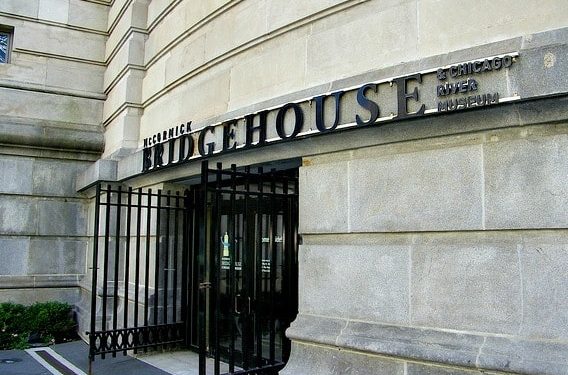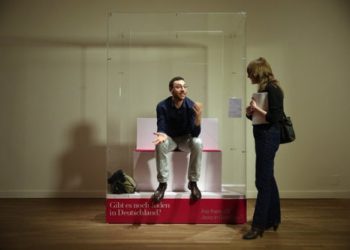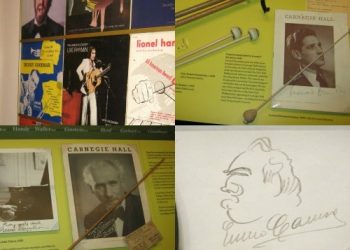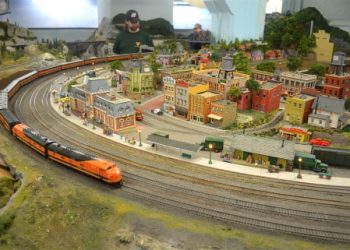We interrupt our regularly scheduled guest posts, so I can write a submission of my own for American Guide Week. One of the questions in the original 1935 manual for the American Guide series of books asks for interesting landmarks in your district. Considering I live in Chicagoland and this is a blog about museums, let me tell you about the Michigan Avenue Bridge:
Did you know Chicago has more moveable bridges than any other city in the world? There are 37 in total, including 18 along the Chicago River’s main branch. This is something I learned (and that consumed my life) when I briefly worked at the McCormick Bridgehouse & Chicago River Museum, which is located inside one of the Michigan Avenue bridge tender houses.
Beginning at river level and spiraling five stories up, the museum tells the story of the Chicago River and the inner workings of the bridge with somewhat static exhibits (it’s more information center than anything with no “real” objects on display). Believe it or not, the Michigan Avenue Bridge is the first double-deck, double-leaf trunnion bascule bridge ever built. Bascule means “seesaw” in French, which is how this bridge operates. With just two 108-horsepower motors, the bridge’s steel and roadway weigh the same as the concrete and steel counterweight. Museum visitors can access the bridge’s gear room to see this engineering marvel. During the spring and fall, scheduled bridge lifts show the bridge gears in operation as the leaves are raised and lowered. And at the very top of the bridgehouse, visitors are treated to magnificent 360 degree views of the city and river. But the museum is teeny tiny as it cannot fit more than 34 people at a time. Let’s just say I wouldn’t want to live inside one of these buildings.
Conceived as part of Daniel Burnham’s 1909 Plan of Chicago, the bridge was designed to improve both the city’s transportation and riverfront. Its construction between 1918 and 1920 led to the development of North Michigan Avenue as the city’s premier thoroughfare. The bridge, measuring just under 400 feet (122 meters) and featuring two levels for cars and pedestrians, was listed as an official Chicago Landmark in 1991.
















